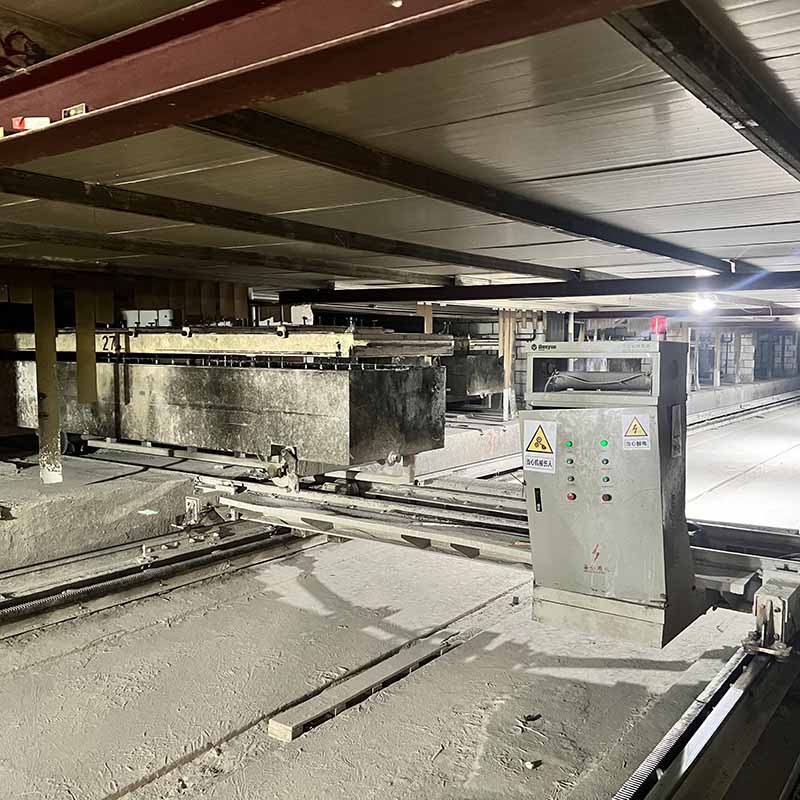
Image source:Aiwei block machine
Introduction
The United Arab Emirates (UAE), known for its futuristic architecture and urban development, is undergoing a construction revolution fueled by sustainable building practices. At the forefront of this revolution is the adoption of AAC (Autoclaved Aerated Concrete) blocks and cutting-edge AAC block machines. This article explores how the UAE is modernizing its construction industry through the use of AAC blocks, ushering in a new era of sustainability and innovation in the desert.
Chapter 1: The UAE’s Construction Boom
The UAE’s construction sector has experienced unprecedented growth over the past few decades, driven by urbanization, tourism, and economic diversification. This chapter provides an overview of the construction landscape in the UAE, highlighting the challenges posed by the harsh desert environment.
Chapter 2: The Emergence of AAC Blocks
AAC blocks, with their lightweight, thermal insulation properties, and sustainable manufacturing process, have gained popularity as a green alternative to traditional building materials. This chapter explores the reasons behind the UAE’s adoption of AAC blocks and their unique benefits in the local context.
Chapter 3: AAC Block Production and Machinery
Central to the AAC block revolution in the UAE are the state-of-the-art AAC block machines. This chapter details the advanced machinery and manufacturing processes used to produce AAC blocks efficiently, ensuring high-quality construction materials for the UAE’s ambitious building projects.
Chapter 4: Sustainability and Energy Efficiency
Sustainability is a cornerstone of the UAE’s vision for the future. This chapter explores how AAC blocks contribute to sustainable construction by enhancing energy efficiency, reducing waste, and minimizing the carbon footprint of buildings in the region.
Chapter 5: The Role of Government Initiatives
Government policies and initiatives play a crucial role in driving sustainable construction practices in the UAE. This chapter discusses the various regulations, certifications, and incentives introduced by the UAE government to promote the use of AAC blocks and sustainable building practices.
Chapter 6: Architectural Innovations
AAC blocks have enabled architects and designers to push the boundaries of creativity in the UAE’s architectural landscape. This chapter showcases innovative and iconic structures that have incorporated AAC blocks, demonstrating the versatility of this building material.
Chapter 7: Desert Challenges and Solutions
Building in the UAE’s desert environment comes with unique challenges, including extreme heat and sandstorms. This chapter explores how AAC blocks, with their insulation properties, help mitigate these challenges and create comfortable living spaces.
Chapter 8: Sustainable Urban Development
The UAE’s commitment to sustainability extends beyond individual buildings to entire cities. This chapter discusses how AAC blocks contribute to the development of eco-friendly, sustainable urban areas in the UAE.
Chapter 9: Case Studies of Iconic Projects
Real-world case studies of iconic construction projects in the UAE illustrate the successful application of AAC blocks and advanced AAC block machines. These projects serve as inspiration for the global construction industry.
Chapter 10: Future Prospects
The article concludes by looking at the future prospects of the AAC block revolution in the UAE. It explores emerging trends, research, and innovations that are set to further enhance the sustainability and efficiency of construction in the desert nation.
Conclusion
The UAE’s adoption of AAC blocks and AAC block machines is a testament to the nation’s commitment to sustainable, energy-efficient, and innovative construction. As the UAE continues to grow and develop, its construction industry serves as a beacon of inspiration for countries worldwide, showcasing how modernization and sustainability can go hand in hand, even in the challenging desert environment.
